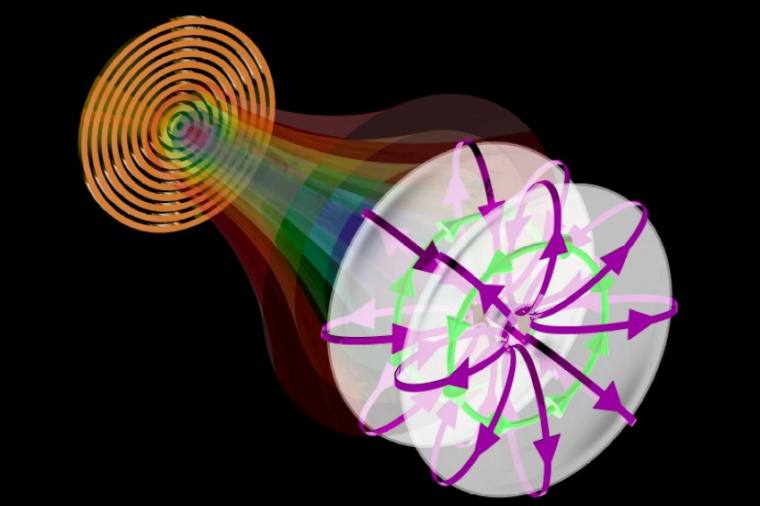Entanglement in classical systems
Two scientists from UK and Mexico present new opportunities of diversified non-separable states of light for both fundamental science and applications in the near future.
Entanglement or non-separability constitutes a cornerstone of quantum mechanics from which many of its unique characteristics arise. For example, non-separability in entangled particle pairs leads to apparent instantaneous transfer of information and counterintuitive states of matter. Such phenomena find applications in diverse areas, such as quantum computing or quantum cryptography. Nevertheless, non-separability is also ubiquitous in the classical domain. Indeed, even prism dispersion of light as observed by Newton over three centuries ago can be considered as an example of non-separable light. However, non-separability in classical systems, or classical entanglement is little explored and in a fragmented fashion, while its potential is certainly not fully exploited.

Over the last few years, there has been a surge of interest in non-separable optical systems, typically involving free-space propagating beams and pulses. To this end, the on-demand design and generation of non-separable classical states of light using its various degrees of freedom, such as space, polarization, frequency, and propagation path amongst others has become crucial. The concept of non-separability in optics is now being extended to space-time non-separable pulses and ray-wave coupled geometric light. Recently, two researchers from UK and Mexico propose a comprehensive review of non-separability in classical light providing a perspective on the opportunities for both fundamental science and applications. This review provides a bird’s eye view on the rapidly growing, but incoherent, body of work on non-separable classical states involving different degrees of freedom of light and will introduce a unified framework for their classification, which is extremely timely and of much needed perspective on the field and its applications.
First, the researchers illustrate the similarities and differences between classical and quantum light states by tutorial examples including coherent states and cat states. This is followed by a mathematical description of classical light states borrowing tools from quantum mechanics and showing formal analogies between quantum states and classical eigenmodes. More precisely, it shows that non-separable states of classical light can be derived from a Schrödinger-like equation. This in turn allows to describe many properties of classical light with methods typically employed in quantum mechanics, thus providing a theoretical framework to construct classical non-separable states.
Classical non-separable states with two degrees of freedom can be described analogously to bipartite entangled quantum states (e.g. Bell state). Here discuss classical analogs of two-dimensional Bell states, such as space-polarization non-separable states (e.g. vector vortex beams) and space-time non-separable states as higher-dimensional Bell states (e.g. focused pancake pulses); Examples of other bipartite states with it classical analog structured light are also discussed.
The researchers discuss non-separable states with multiple degrees of freedom, e.g. the quantum Greenberger–Horne–Zeilinger state. Such exotic states of structured light include the ray-wave-polarization non-separable beam and space-time-polarization non-separable pulse. They set up a roadmap for the development of classical non-separable states and give perspective on challenges as well as potential applications in optical metrology, sensing, optical communication, cryptography, computation. So, new opportunities of diversified non-separable states of light are presented for both fundamental science and applications in the near future. (Source: LPC / CAS)
Links: Optoelectronics Research Centre, University of Southampton, Southampton, UK • Centro de Investigaciones en Óptica, León, México











